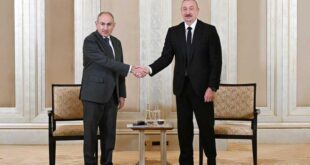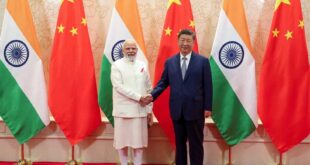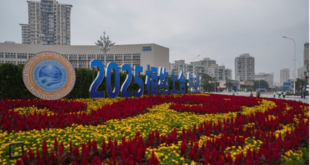The “Great Game” is a phrase for elucidating contestation between great powers. In spite of the fact that the historical roots of the great game traced back to Britain and Russia’s contention in the 19th century, here it means rivalry between the U.S. and China as great powers of the 21st century. Contention between/among great powers would be the biggest or at least one of the most influential and determining factors that shape the international world system and structure. On the threshold of the new millennium, China’s economic boom led to the redefinition of China’s spheres of influence and national interest, but the surrounding environment has been the U.S. sphere of influence. As the U.S. rebalanced toward Asia, the zero-sum and increasing contentiousness were dominant. China, as the second largest economy and GDP in the world, has turned economic muscles into political strength and soft power. China’s strategic culture has consolidated with Chinese cultural and political heritages. The weight and situation of “balancing” in the tradition of Confucianism and what China has learned throughout history have acted as vital factors in Chinese strategies; in other words, roadside markers and milestones of China’s foreign policy are made throughout the idea of “balancing” and historical events and experiences.
To turn China’s economic muscles into political strength, that country begins to redefine its sphere of influence and objects. As it was mentioned, East Asia was not a convenient chessboard for China to curtail the U.S.’s previous expanding influence. China zoomed into a new way; according to Yun Sun, a fellow with the Africa Growth Initiative and the John L. Thornton China Center at Brookings, in his article “March West: China’s Response to the U.S. Rebalancing” (2013), “March West” is a grand strategic proposal based on what is the best alternative for China when it comes to regional and international policy. The gist of the argument is shifting attention from the heated competition and heightened tensions in the East China Sea to westward (Central Asia and the Middle East) as a region and board without U.S. intense presence. The proposed idea was articulated by Wang Jisi, one of the most prominent and influential international relations scholars at Peking University. In Wang’s view, west of China (Central Asia and the Middle East) is free from U.S. order and “pre-existing economic integration mechanisms.” China’s tendency for expanding influence in the world is crystalized in economic plans like the Digital Silk Road and Belt and Road Initiative (BRI). China is both a critical trading partner for the U.S. and a major competitor.
Despite the fact that China is a critical trading partner it is considered as a just behind competitor as well; What can be called as an economic conflict between U.S and China, has been ongoing since January 2018, when Donald Trump of U.S kicked off imposing tariffs and some other trade barriers on China with the aim of forcing that country to make changes to what in U.S’ eye have defined as a longstanding unfair trade practices but it can be considered an established power (here U.S) is replete with fears vis a vis a rising power (here China); what is coined and theorized as “Thucydides Trap” by Graham Allison, Harvard esteemed professor, and can be applicable to the China-U.S relations; contestation over controlling and gaining power as a scarce commodity. China’s investment and presence in the southwest of the Asian region, especially the Persian Gulf coastline countries, can be assumed a march to the west to take a bigger share of the power pie. After China controlled some homes of this chessboard U.S. began to redefine the situation of the West south of Asia, the Persian Gulf region in particular, as a new strategic part in the “Great Game vis-à-vis its competitor. Due to the big capacity of the Persian Gulf region, “it could be one of the most undervalued opportunities if we get peace and stability throughout the region. If we solve Iran and you can finance in that market…it could be much bigger than Europe,” said Steve Witkoff, U.S. special envoy in the Middle East, in an interview with Tucker Carlson.
The Trump administration has kicked off a new policy, as the U.S. president announced in his last interview on Fox News, the Persian Gulf region as…”a great region never properly treated….They were going toward China, but….” What was stated by the U.S. president and Witkoff are harbingers of a new policy vis-à-vis countries of the Persian Gulf and versus China’s presence in this region. Iran, as one of the most prominent countries in energy (second global owner of natural gas and one of the most prominent in oil sources) with 2700 km of coastline, has acted as a vital player in the southwest of Asia and the Middle East. Iran controls a critical part of the Strait of Hormuz, a key global oil shipping passage. This country is located at a strategic intersection between the Arab, Turkish, Russian, and Indian worlds. Iran’s geography is vital in transit for the Middle East, Central Asia, the Persian Gulf, the Caucasus, and the Indian subcontinent; in other words, at the crossroads of major trade routes between Asia and Europe. The Persian Gulf in particular is the backbone of the global economy; a narrow passage that is, a place where approximately 20 million oil barrels, accounting for nearly 30% of world oil trade, with 70% destined for Asia, are transited. Other data sources show a third of the world’s liquefied natural gas and almost 25-30% of total global oil consumption pass through the strait, making the strait a highly important strategic location for international trade.
The control of the strait has given Iran leverage when it comes to its interactions with global powers and neighbors. How is Iran’s geostrategic geography a matter of consideration in today’s world?
A. Iran as an intersection in north-south and east-west corridors. B- Iran is the shortest route for a more efficient BRI. It can be the most efficient for three routes of six routes in BRI. C- In parallel with BRI, there is another corridor planned by India, IMEC, a corridor among India, the Middle East, and Europe. With Iran’s cooperation, IMEC would be a more efficient one. D. Iran is a populated country in the region with a big and untouched market for U.S. and China investment and finance and some other economies of the region. E- Iran is a unique country when it comes to mines and underground resources. One part of a central province in Iran is composed of a huge volume of Latium as a rare and strategic resource. F—With approximately 300 sunny days in a year, Iran has the capacity for being a pole of renewable energy. G. Iran can be the best and most powerful guarantor of transformed oil and gas in the Hormuz Strait. It is incumbent on Iran to deal with the way of alleviating the harmful effects of sanctions and isolation. In the case of the Iran-U.S. agreement, an Iran without a convoluted web of sanctions and previous good relations with China would be possible to enhance its situation and luxuriate both the U.S. and China; and there would be an “Iran moment.”
 Geostrategic Media Political Commentary, Analysis, Security, Defense
Geostrategic Media Political Commentary, Analysis, Security, Defense





